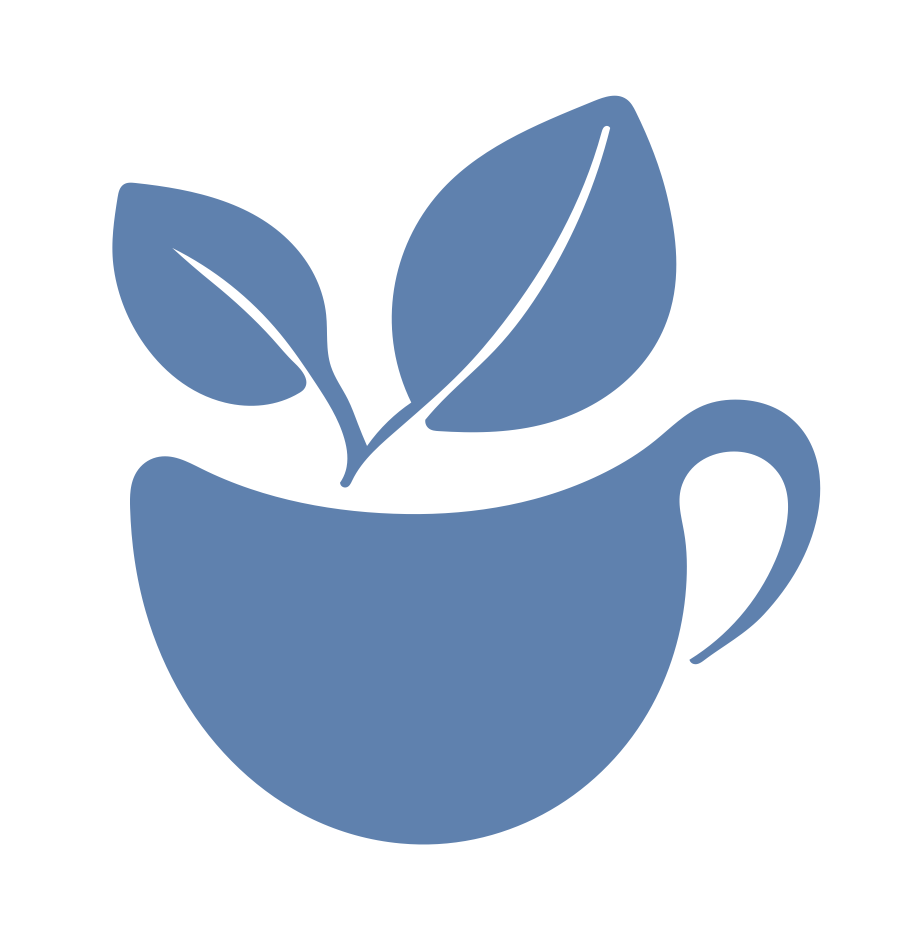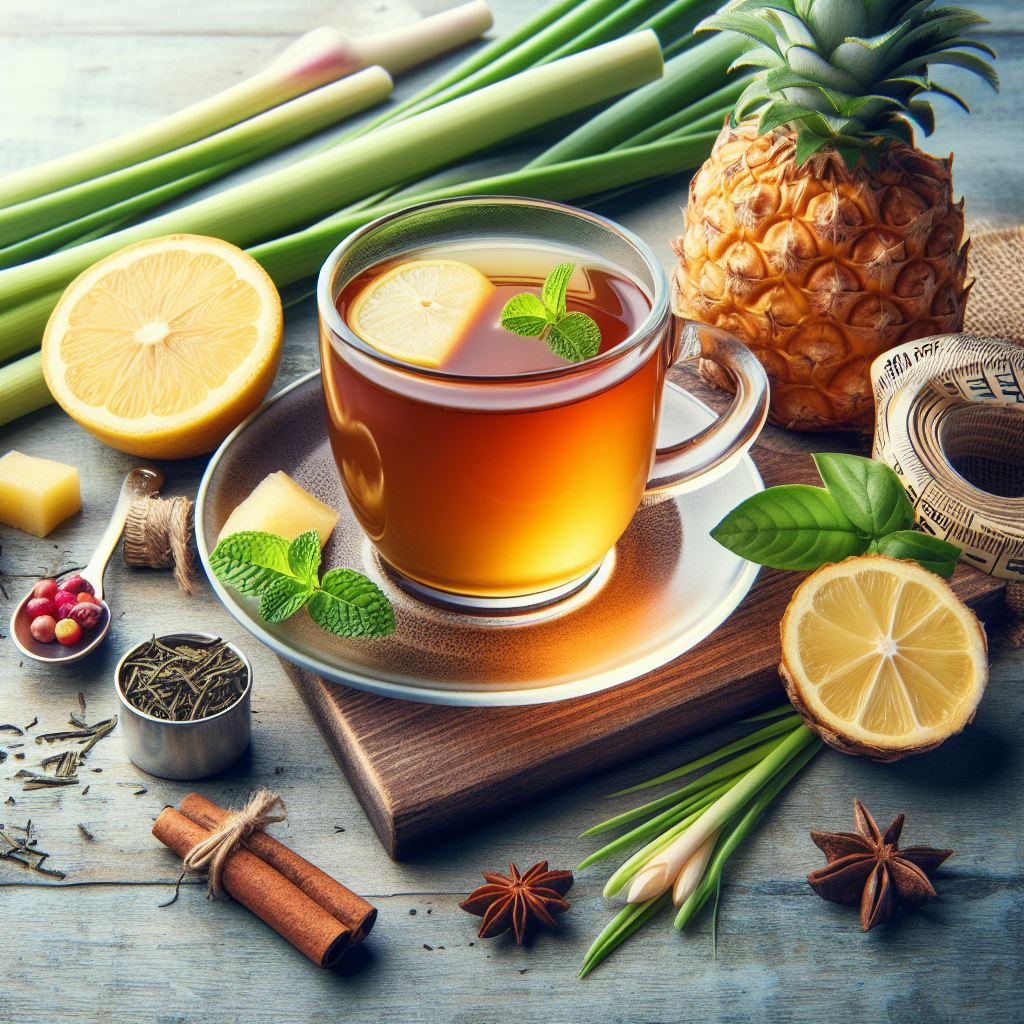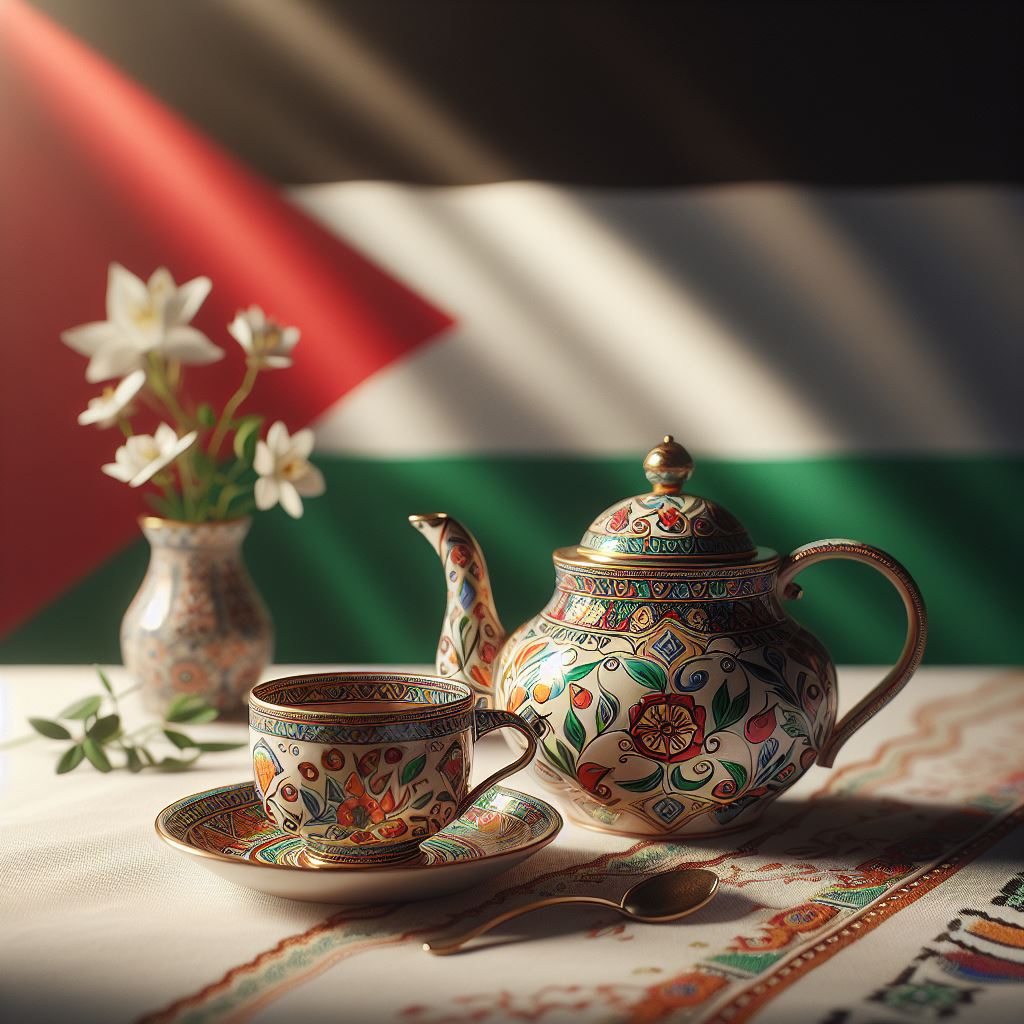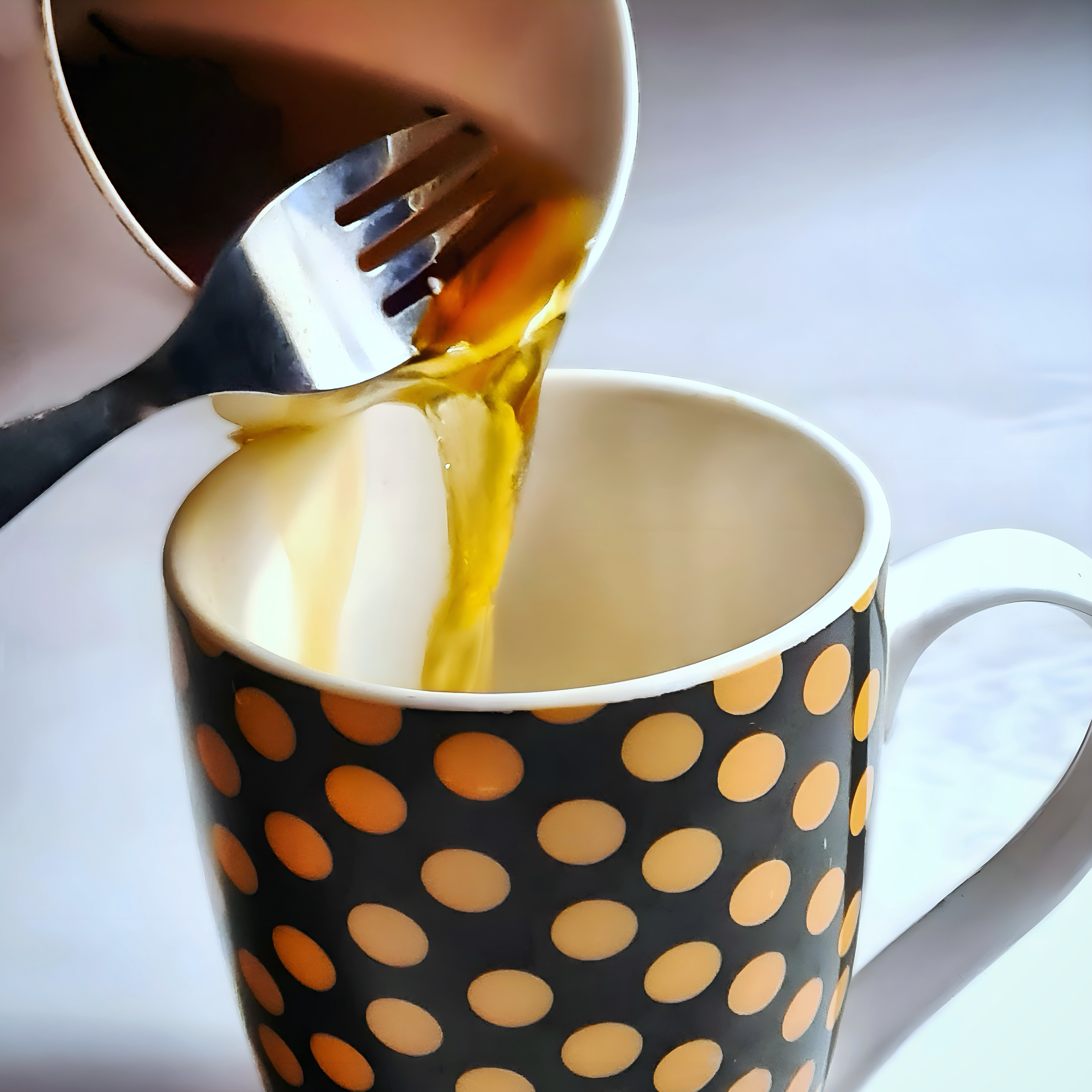Do you need a break from the stress and chaos of everyday life? Do you want to enjoy a cup of tea that can calm your nerves and soothe your senses? If so, then this lavender chamomile tea recipe is the perfect choice for you!
This herbal infusion combines two of the most popular and beneficial herbs: lavender and chamomile. Both of these herbs have a long history and a wide popularity as natural remedies for various ailments, which we will discuss in this article. So, lets get started!

The Delightful Tea Duo: Lavender and Chamomile
Lavender and chamomile are two herbs that have been used for centuries for their medicinal and cosmetic properties. They are both members of the Asteraceae family, which includes other plants like sunflowers, daisies, and marigolds. Dandelion tea is another popular choice of tea from the same family of herbs.
Lavender:
Lavender is a flowering plant that grows in sunny and dry climates, mainly in the Mediterranean region. It has purple or blue flowers that are arranged in spikes on long stems.
This purple plant is known for its calming and relaxing effects on the nervous system, as well as its antiseptic and anti-inflammatory properties on the skin. Lavender can help with anxiety, insomnia, headaches, depression, and stress.

Learn how to grow your own lavender plants!
Chamomile:
Chamomile is a herbaceous plant that grows in temperate and subtropical regions, mainly in Europe, Asia, and North America. It has white or yellow flowers that resemble daisies, but with smaller petals and larger centers.
This daisy-like flower is known for its soothing and healing effects on the digestive system, as well as its anti-spasmodic and anti-allergic properties on the respiratory system. Chamomile can help with indigestion, nausea, colic, diarrhea, constipation, and allergies.

Learn how to grow your own chamomile plants!
Infusing them together:
When lavender and chamomile are combined in a tea infusion, they create a harmonious recipe of flavors and aromas that can enhance each other’s benefits. Lavender adds a floral and slightly sweet note to the tea recipe, while chamomile adds a fruity and slightly bitter note.
Together, they create a balanced and pleasant taste that can appeal to most palates. The scent of this lavender chamomile tea recipe is also very relaxing and soothing, and can evoke feelings of tranquility and peace.
The Art of Selecting Ingredients

While you can purchase pre-made chamomile and lavender tea bags for convenience, there are many advantages to making your own at home with raw ingredients.
One of the advantages of making your own lavender chamomile tea is that you can choose the quality and quantity of the recipe ingredients according to your preferences. You can also experiment with different combinations and proportions of lavender and chamomile to find your ideal blend.
Fresh or Dried Herbs?
The first step in selecting ingredients is to decide whether you want to use fresh or dried herbs. Fresh herbs have a more intense flavor and aroma than dried herbs, but they also have a shorter shelf life and may be harder to find or grow. Dried herbs have a more subtle flavor and aroma than fresh herbs, but they also have a longer shelf life and may be easier to store or buy.
Fresh Herbs:
If you opt for fresh herbs, you will need to harvest them at the right time to ensure their optimal potency. The best time to harvest lavender is when the buds are about to open or just opened. The best time to harvest chamomile is when the flowers are fully bloomed. You will need to wash them thoroughly before using them in your tea.
Dried Herbs:
If you opt for dried herbs, you will need to buy them from a reputable source or dry them yourself. You can buy dried lavender or chamomile from online stores, health food stores, or local markets.
You can try the FGO Organic Dried Lavender Flowers from Amazon for a good all-round option. Additionally, you can also purchase U.S. Wellness Chamomile Flowers from Amazon too.


Drying your own herbs?
You can also dry fresh herbs in the oven or by hanging them upside down in a dark and dry place until they are completely dry. However, you will need to store them in an airtight container away from light, heat, and moisture. Find out for about drying herbs at home here.
Essential Tools & Ingredients for Lavender Chamomile Tea Recipe
Once you have selected your ingredients, you will need some basic tools and equipment to start the lavender chamomile tea recipe. Dont worry though, you should have all of these items at home, or at least alternatives. Here is a list of the essential items that you will need:
Equipment:
- An infuser or a strainer: You can use a basket infuser, a ball infuser, a spoon infuser, or a mesh strainer. The infuser or strainer should fit inside a teapot or cup and allow enough room for the herbs to expand. If you do not have one, find out How To Strain Tea Without a Strainer: 7 Easy Methods.
- A kettle or a pot: You can use an electric kettle, a stovetop kettle, or a regular pot. The kettle or pot should be large enough to hold enough water for the tea and have a spout for easy pouring.
- A measuring spoon: You can use a regular teaspoon, a tablespoon, or a special tea spoon. The amount of herbs will depend on your personal taste and the strength of the herbs. A general rule of thumb is to use one teaspoon of dried herbs or two teaspoons of fresh herbs per cup of water.
Ingredients:
In addition to these tools and equipment, you will also need the following ingredients:
- Lavender buds: Lavender buds are the dried or fresh flowers of the lavender plant. They are the main ingredient for this lavender chamomile tea recipe and provide most of its flavor and aroma.
- You can use either English lavender (Lavandula angustifolia) or French lavender (Lavandula stoechas) for your tea. You will need about one teaspoon of dried lavender buds or two teaspoons of fresh lavender buds per cup of water.
- Chamomile flowers: Chamomile flowers are the dried or fresh flowers of the chamomile plant. They are the secondary ingredient in the lavender chamomile tea recipe and provide some of its flavor and aroma.
- You can use either German chamomile (Matricaria recutita) or Roman chamomile (Chamaemelum nobile) for your tea. You will need about one teaspoon of dried chamomile flowers or two teaspoons of fresh chamomile flowers per cup of water. Likewise, you can use teabags if you do not have the fresh ingredients.
- Optional ingredients: Experiment with other herbs or spices that you can add to the lavender chamomile tea recipe to customize it to your liking.
- Some examples are lemon balm, mint, rosemary, thyme, sage, ginger, cinnamon, cardamom, cloves, nutmeg, vanilla, honey, lemon, milk, cream, etc. You can use any combination and amount of these ingredients as you wish.
How to Make Lavender Chamomile Tea: 3 Methods
Now that you have gathered all the tools and ingredients, you are ready to start the lavender chamomile tea recipe. There are several brewing methods that you can use to prepare your tea, such as loose-leaf, tea bags, or infusion. Below are some detailed instructions for each method:

1. Loose-leaf method
To begin with, the most ideal method for the best flavor. This loose-leaf method is the traditional and popular way of making herbal teas. It involves placing the herbs directly into the teapot or the cup and pouring hot water over them.
To use this method, follow these steps:
- Firstly, fill your kettle or pot with fresh cold water and bring it to a boil.
- Rinse your teapot or cup with hot water to warm it up.
- Add one teaspoon of dried lavender buds and one teaspoon of dried chamomile flowers (or two teaspoons each if using fresh herbs) per cup of water into your teapot or cup.
- Pour the boiling water over the herbs and cover the teapot or cup with a lid or a saucer.
- Let the tea steep for about five minutes or longer if you want a stronger flavor.
- Strain the tea into another teapot or cup using an infuser or a strainer.
- Finally, enjoy your lavender chamomile tea!
You can also make your own teabags by using a reusable or disposable tea filter. Try Eco-Fil Disposable Empty Tea Bags and simply fill the filter with one teaspoon of dried lavender buds and one teaspoon of dried chamomile flowers (or two teaspoons each if using fresh herbs) per cup of water and seal it. Then, follow the same steps as above.
2. Tea bag method
Another method, which is the most convenient and easy way of making herbal teas is using tea bags (or a mixture of tea bags and loose leaf). You can simply purchase pre-made chamomile and lavender teabags for extra convenience.
However, there is an advantage if it’s possible to purchase chamomile tea bags and lavenders flowers separately. This way, you can adjust the amount of lavender you add to your chamomile tea. Just place a tea bag containing the chamomile herbs into a cup and pour hot water over it.
To use this method, follow these steps:
- Firstly, fill your kettle or pot with fresh cold water and bring it to a boil.
- Rinse your cup with hot water to warm it up.
- Place a tea bag containing chamomile (or your preferred blend) into your cup.
- Add 1 teaspoon of lavender flowers (or your preferred amount).
- Pour the boiling water over the tea bag and lavender and cover the cup with a lid or a saucer.
- Let the tea steep for about five minutes or longer if you want a stronger flavor.
- Lastly, remove the tea bag and strain the lavender (try squeezing it gently to extract more flavor).
- Enjoy your lavender chamomile tea.
3. Cold Brew method
The infusion method is more of a unique and refreshing way of making herbal teas. It can sometimes extract more flavor and nutrients from the herbs, whilst also cooling you down! It involves placing the herbs in a glass jar or bottle and pouring cold water over them. Then, letting the mixture sit in the refrigerator for several hours or overnight. Find out more about cold-brewing tea for more info.
To use this method, follow these steps:
- Firstly, fill a glass jar or bottle with fresh cold water.
- Add one teaspoon of dried lavender buds and one teaspoon of dried chamomile flowers (or two teaspoons each if using fresh herbs) per cup of water into the jar or bottle.
- Close the lid tightly and shake well to mix the herbs and water.
- Place the jar or bottle in the refrigerator and let it infuse for at least four hours or overnight.
- Lastly, strain the tea into another jar or bottle using an infuser or a strainer.
- Enjoy your lavender chamomile tea cold or warm.
You can also add some ice cubes, lemon slices, or honey to your infused tea for extra refreshment and flavor.
Enhancing the Experience

The lavender chamomile tea recipe is delicious and soothing on its own, but you can also enhance your tea-drinking experience with some additional ingredients and pairings. Here are some suggestions:
- Add some honey, lemon, or mint to your tea for extra sweetness, tanginess, or freshness. Honey can also boost your immune system and soothe your throat, while lemon can detoxify your body and brighten your mood, while mint can aid in digestion and relieve headaches.
- Pair your tea with some foods or desserts that complement its flavor and aroma. Some examples are cookies, cakes, scones, muffins, breads, cheese, fruits, nuts, etc. You can also make a lavender chamomile tea-infused recipe like ice cream, pudding, jam, syrup, etc.
- Use your tea for homemade beauty products or relaxation rituals. You can use your tea as a facial toner, a hair rinse, a bath soak, a foot soak, a compress, a spray, etc. You can also add some essential oils like lavender or chamomile to your tea for extra aromatherapy benefits.
Conclusion
This lavender chamomile tea recipe is a soothing and relaxing brew that can help you unwind and relax after a long day. It can also provide you with many health benefits such as calming your nerves, improving your sleep quality, aiding your digestion, healing your skin, etc.
I hope you enjoyed this blog post and learned something new about lavender chamomile tea. Personally, I love drinking this tea before bedtime as it helps to fall asleep faster and sleep better. It’s great to add some honey and lemon to the tea for extra flavor and health benefits. Discover more about herbal teas in our ultimate guide: A Guide to Herbal Tea: Everything You Need to Know
What about you? Do you have your own lavender chamomile tea recipe? How do you make it? What do you add to it? What do you pair it with? Share your thoughts and experiences in the comments below.
Check Out More Tea-Related Articles:
- Tea Processing: The Ultimate Journey from Plant to Cup
- Honey Ginger Tea: A Simple, Delicious and Healthy Kick
- Osmanthus Tea: How to Brew, Enjoy, and Use This Floral Delight
- How to Make Sage Tea: A Guide to the Magical World of Sage
- How to Make Dandelion Tea: A Step-by-Step Guide





Leave a Comment